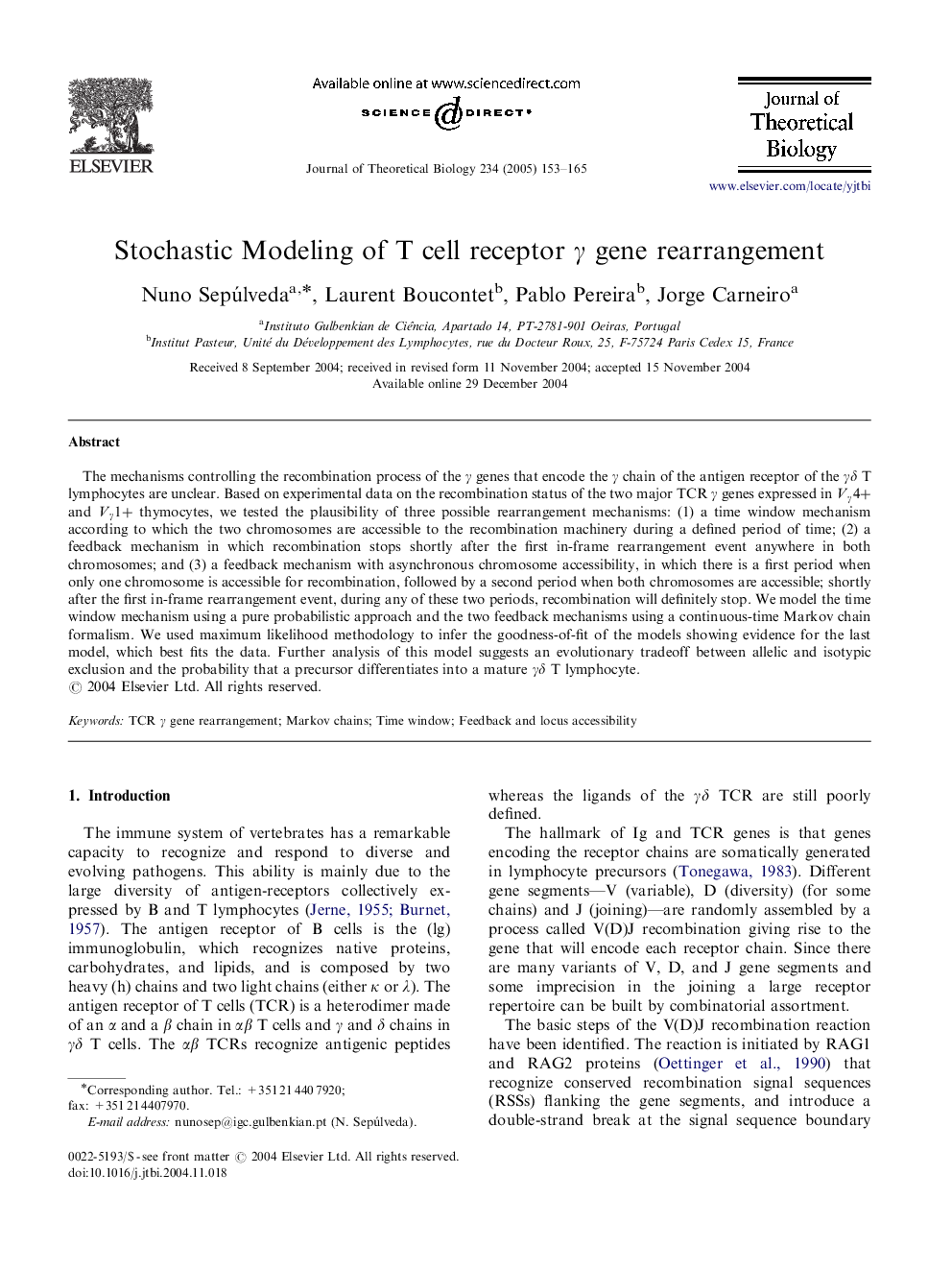| Article ID | Journal | Published Year | Pages | File Type |
|---|---|---|---|---|
| 9469594 | Journal of Theoretical Biology | 2005 | 13 Pages |
Abstract
The mechanisms controlling the recombination process of the γ genes that encode the γ chain of the antigen receptor of the γδ T lymphocytes are unclear. Based on experimental data on the recombination status of the two major TCR γ genes expressed in Vγ4+ and Vγ1+ thymocytes, we tested the plausibility of three possible rearrangement mechanisms: (1) a time window mechanism according to which the two chromosomes are accessible to the recombination machinery during a defined period of time; (2) a feedback mechanism in which recombination stops shortly after the first in-frame rearrangement event anywhere in both chromosomes; and (3) a feedback mechanism with asynchronous chromosome accessibility, in which there is a first period when only one chromosome is accessible for recombination, followed by a second period when both chromosomes are accessible; shortly after the first in-frame rearrangement event, during any of these two periods, recombination will definitely stop. We model the time window mechanism using a pure probabilistic approach and the two feedback mechanisms using a continuous-time Markov chain formalism. We used maximum likelihood methodology to infer the goodness-of-fit of the models showing evidence for the last model, which best fits the data. Further analysis of this model suggests an evolutionary tradeoff between allelic and isotypic exclusion and the probability that a precursor differentiates into a mature γδ T lymphocyte.
Keywords
Related Topics
Life Sciences
Agricultural and Biological Sciences
Agricultural and Biological Sciences (General)
Authors
Nuno Sepúlveda, Laurent Boucontet, Pablo Pereira, Jorge Carneiro,
